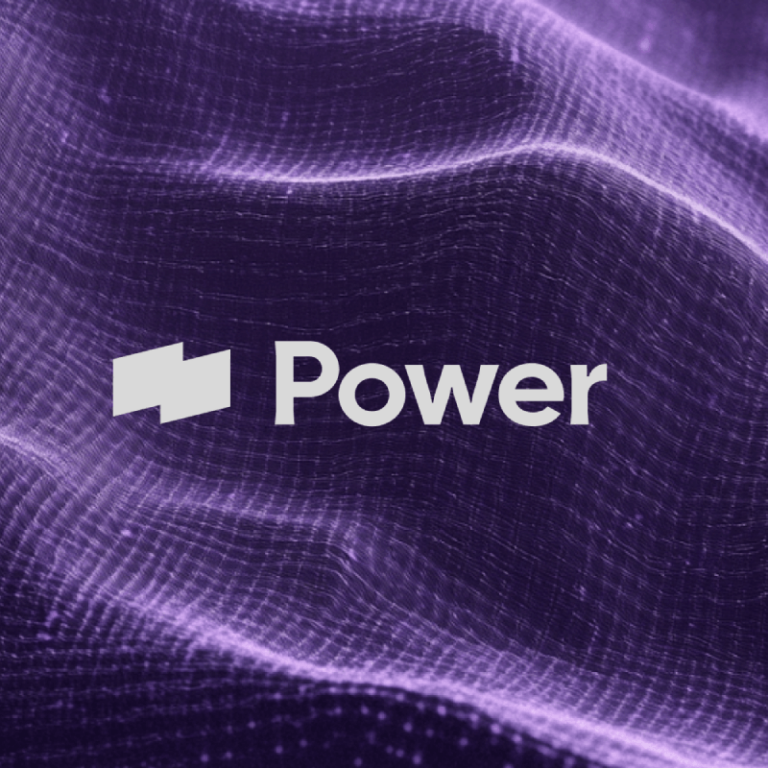A Complete Guide to CBD Marketing: The Do’s and Don’ts (And How to Get Around It!)

- 1. What Are the Rules and Regulations Regarding CBD Advertising?
- 2.
- 3. What Are Some Things I Should Avoid When Marketing My CBD Products?
- 4. Are There Any Best Practices I Should Follow When Marketing My CBD Products?
- 5. Content Marketing and SEO
- 6. Who Can Market CBD?
- 7. Defining CBD in Marketing
- 8. E-Commerce Platforms & Return Policies
- 9. What Channels Can I Use to Promote My CBD Products in Retail?
- 10. Create an Effective Marketing Strategy with Power Digital
CBD marketing can be tricky, especially in the current regulatory climate. While the legal framework surrounding CBD is evolving, it’s important to stay up-to-date on what is and isn’t permissible when it comes to promoting and selling products containing CBD. In this complete guide to CBD marketing, we’ll cover the do’s and don’ts you need to know in order to effectively market your CBD products specific to retail channels.
One of the key reasons CBD marketing is so challenging is because brands must abide by federal, state, and platform-specific regulations while also differentiating themselves in a market crowded with competitors. In this complete guide to CBD marketing, we’ll cover the do’s and don’ts you need to know in order to effectively market your CBD products specific to retail channels. We will also address all the complexities of CBD marketing, from navigating “high-risk” payment processing to ensuring lab-tested quality, so you can position your CBD brand for maximum growth and customer trust.
What Are the Rules and Regulations Regarding CBD Advertising?
Whether you’re creating a marketing strategy for a specific CBD product or an entire CBD brand, it’s important to be mindful of laws and regulations. CBD advertising can be a tricky area to navigate since laws and regulations vary between countries, states, and even cities. Additionally, due to the fact that CBD is a relatively newer industry, some of the rules and regulations may not have been fully established yet.
At the federal level, the U.S. Food and Drug Administration (FDA) has stated that it does not allow any CBD-containing products to be marketed as dietary supplements.1 This means that any marketing materials used to promote CBD must not suggest that the product has any health benefits, as doing so would be considered false advertising. Additionally, the FDA requires all CBD products to include a disclaimer stating that the product has not been evaluated by the FDA and is not intended to diagnose, treat, cure or prevent any disease.
It is also important to note that the FDA does not allow for any CBD advertisements on broadcast television, radio, or print media. If a company wishes to advertise its CBD products on these mediums, it will need to obtain approval from the FDA prior to doing so.
At the state level, CBD advertising laws can vary greatly. In some states, like Colorado and Oregon, there are no specific laws governing CBD advertising. However, other states have adopted more stringent rules, such as requiring companies to provide proof of third-party testing or certification for their products before advertising them. Additionally, some states may require companies to register with their respective Secretary of State prior to advertising their products. Therefore, it is important to research the specific laws in your state before launching a CBD advertising campaign. Additionally, a 2019 Gallup poll showed that almost one in five U.S. adults (18%) reported using CBD.2 With the increasing popularity of CBD products and the ever-changing landscape of CBD regulations, businesses in the industry need to keep up-to-date with the latest rules and regulations for CBD advertising.
Keep in mind that many platforms (e.g., Google Ads, Facebook/Meta, and Twitter) enforce their own restrictions on “cannabis” or “hemp derived CBD.” Some allow only topical hemp products, while others completely prohibit any mention of “CBD” in ad copy. Always review a channel’s advertising policies before launching a CBD campaign to avoid ad disapprovals or account bans.
Understanding the Difference Between Hemp-Derived vs. Cannabis-Derived CBD
While “CBD marketing” often groups all products together, the source of your CBD can affect how you’re regulated or allowed to advertise. Hemp-derived CBD (containing less than 0.3% THC) is considered legal at the federal level under the 2018 Farm Bill. Cannabis-derived CBD, on the other hand, is subject to stricter federal guidelines because marijuana is still illegal at the federal level.
Key Points:
- Hemp-Derived CBD: Generally legal as long as THC content remains under 0.3%. Many ad platforms allow some marketing for topical hemp products, but ingestible items remain restricted in many places.
- Cannabis-Derived CBD: Still federally regulated. Likely to be disallowed on social media platforms and Google Ads.
Understanding this distinction helps you tailor your marketing and remain compliant with federal regulations, state laws, and platform policies.
What Are Some Things I Should Avoid When Marketing My CBD Products?
When it comes to marketing CBD products, there are a few things you should avoid. These include:
- Making false or unsubstantiated claims about the health benefits of your product. The FDA has not approved CBD as a drug and it should not be used to treat, diagnose or cure any medical condition.
- Using any medical-related imagery in your advertising materials. This includes images of doctors, nurses, syringes, and pills.
- Advertising to minors. CBD products should only be marketed to adults 18 years and older.
- Making unsubstantiated claims about the potency or quality of your product. All CBD products must meet certain standards for purity, concentration and other standards set by the FDA or state regulations.
- Advertising in venues that are inappropriate for CBD products. This includes social media sites like Facebook and Instagram that do not allow ads for CBD products.
- Promoting CBD products as a cure-all or miracle cure for any ailment or health condition.
- Misrepresenting your product in any way. This includes false or misleading claims about the ingredients, quality or effectiveness of your product.
- Making broad statements that suggest that CBD is a safe and effective treatment for all types of ailments without providing any scientific evidence to support these claims. When it comes to retail marketing, there are a few additional things to avoid:- Creating ads that make unsubstantiated claims about the benefits of your product
– Making exaggerated or false promises about your product
– Failing to include a warning label on products containing more than 0.3% THC
– Misleading customers about the concentration or potency of your product
– Misrepresenting the effects of your product on customers
High-Risk Merchant Accounts and Payment Processing
Many payment processors classify CBD as “high-risk” because of its association with cannabis and potential for chargebacks if customers claim the product did not meet their expectations. As a result, mainstream merchant services (e.g., PayPal, Stripe) often refuse to work with CBD businesses or impose strict requirements.
Workable Payment Solutions
- Specialized High-Risk Merchant Accounts: Some providers tailor their services to CBD and hemp brands, offering payment gateways that allow for legal transactions.
- Shopify “Attestation”: If you’re using Shopify for your CBD brand, you may need to complete an “Attestation for the Sale of Hemp and Hemp-Derived Products” form. Shopify Payments may not be available, so you’ll likely integrate a third-party provider like DigiPay or Pinwheel.
- Square & Other Platforms: Square has pilot programs for CBD businesses, but always confirm state-by-state regulations.
By choosing the right merchant service, you reduce the risk of sudden account closures and ensure a better customer experience at checkout.
Are There Any Best Practices I Should Follow When Marketing My CBD Products?
When it comes to marketing CBD products, there are some best practices you should follow to ensure your campaigns are compliant and successful.
Social Media Marketing
It’s important to be mindful of advertising restrictions imposed by various social media platforms, search engines, and other online outlets when creating a digital CBD marketing strategy. The majority of these platforms have policies in place prohibiting the promotion of CBD products. To ensure your ads remain compliant, you should research each social media platform’s individual policies before you launch a campaign.
When advertising your CBD products, it’s important to use transparent language and be honest about what your product contains. This includes providing accurate descriptions of your ingredients and their percentages. Being honest and transparent will not only help build trust with customers but also help protect you from legal repercussions.
Additionally, consider “organic” marketing on channels like Instagram or TikTok by focusing on educational content rather than direct product promotion. Provide industry updates, highlight non-medical benefits (e.g., relaxation), and share behind-the-scenes sourcing or testing processes.
Content Marketing and SEO
When creating content for your CBD campaigns, you should use organic search engine optimization tactics to help your products rank higher on search engine results pages. A content marketing and SEO strategy will make it easier for potential customers to find you and your products. Additionally, you should also consider utilizing influencer marketing campaigns to promote your products. Influencers already have established relationships with their audiences, which makes it easier to create effective campaigns that reach potential customers.
Amazon Marketing
Besides social media, SEO and content marketing, you can also use Amazon to market your CBD products. For Amazon, specific rules regarding CBD advertising apply, such as requiring disclaimers on all pages containing CBD products and including only CBD-specific search terms in your product title. Additionally, you should use Amazon’s keyword optimization tools to ensure your products are showing up in relevant searches. Following these best practices will help ensure your CBD marketing efforts on Amazon are successful and compliant. It’s estimated that the global CBD market could reach $23.6 billion by 2025, according to a report by Grand View Research.3 To ensure your CBD business can capitalize on this growing market, it’s important to ensure you are following all of the relevant rules and regulations for marketing your CBD products.
Brand Differentiation: Building Authority & Educating Your Audience
In a “sea of green,” how can your CBD brand stand out?
- Emphasize Quality & Transparency: Show third-party lab results, use disclaimers, and maintain honest labeling so customers trust your products.
- Target a Specific Niche: Focus on a particular demographic (e.g., athletes, pet owners) or product type (e.g., hemp-derived CBD oils for stress relief).
- Educate, Don’t Overpromise: Provide data-driven content and avoid medical claims you can’t back with formal research. Instead, offer resources on safe usage and potential wellness benefits without guaranteeing cures or treatments.
- Leverage Social Proof: Collect reviews and testimonials that comply with FDA guidelines (i.e., no health claims) to highlight real user experiences.
Differentiation ultimately comes from demonstrating expertise, reliability, and consistency across all messaging, which helps you establish a strong brand presence in the CBD space.
Who Can Market CBD?
The legalities of who can market CBD products can vary from state to state, so it is important to check the laws and regulations in your area. Generally speaking, anyone over the age of 18 can legally market CBD products. However, there are additional rules to consider when marketing these products.
For example, anyone marketing CBD products must ensure that the products have been tested for purity and accuracy by a third-party laboratory. All marketers of CBD products must adhere to the guidelines set forth by the Federal Trade Commission (FTC) and the Food and Drug Administration (FDA). Both the FTC and the FDA have issued numerous warnings to marketers of CBD products who have made false or misleading claims about their product’s health benefits. These organizations will take action against marketers who violate these regulations.
A recent survey from the Brightfield Group found that 77% of all CBD users found it to be effective for alleviating anxiety and pain.4 This highlights the potential of this powerful natural remedy, and why marketing campaigns must ensure they are not making unsubstantiated claims about a product’s health benefits.
Defining CBD in Marketing
When marketing a CBD brand or products, it’s important to understand exactly what CBD is and how it should be represented in any promotional materials. Cannabidiol (CBD) is one of the many active compounds found in the Cannabis Sativa plant. It has many potential therapeutic benefits and is considered a safe alternative to traditional medicines for a variety of health concerns.
When defining CBD for marketing purposes, it’s important to note that the Food and Drug Administration (FDA) only recognizes the full-spectrum extract from hemp as an approved dietary supplement. All other forms of CBD are considered unapproved drugs and therefore cannot be legally marketed. It’s also important to avoid making any claims about CBD being a “cure-all” or “miracle drug” as this can be seen as deceptive advertising.
When it comes to representing CBD in your marketing materials, the best practice is to stick with factual information and avoid making any unsubstantiated medical claims. Additionally, all products must be clearly labeled with the manufacturer’s name, address, and contact information along with the product’s batch number, expiration date, and list of ingredients. By adhering to these guidelines, you can ensure that you are accurately and ethically representing CBD products in your marketing efforts. It is important to note that in 2018, the Farm Bill removed hemp (which contains less than 0.3% THC) from the list of controlled substances.5 This has made it easier for companies to produce hemp-derived products like CBD oil, which is why the industry has seen such rapid growth over the last few years. According to market research firm Brightfield Group, the global CBD market was valued at $591 million in 2018 and is projected to reach over $22 billion by 2022!6
E-Commerce Platforms & Return Policies
Not all e-commerce platforms treat CBD equally. For instance, Shopify permits the sale of hemp-derived CBD products within certain guidelines, but you’ll need to use a compatible third-party payment processor. BigCommerce has its own requirements for hemp and CBD sellers, and WooCommerce remains more flexible but requires the right payment gateway.
Best Practices:
- Review Each Platform’s CBD Guidelines: Some require additional forms or disclaimers, while others restrict ingestibles or certain product categories.
- Establish Clear Return/Refund Policies: Minimizing chargebacks is crucial in this high-risk space. Transparent return/refund policies help mitigate misunderstandings about product effectiveness or potency.
- Age Gating & Disclaimers: Confirm your platform supports age gating or pop-up disclaimers to meet compliance requirements.
What Channels Can I Use to Promote My CBD Products in Retail?
Promoting CBD products in retail can be a tricky endeavor. With federal regulations still largely restricting the marketing of CBD products, it can be difficult to know which channels are safe and effective for retail promotion.
However, there are still some channels that you can use to promote your CBD products in retail. These include:
- Offline Retail Channels: Traditional marketing outlets such as television, radio, newspapers, and magazines are all viable channels for promoting your CBD products. You can also promote your products through offline events and activities, such as street promotions and pop-up stores.
- Online Retail Channels: Online platforms such as social media, search engine optimization, email campaigns, and display ads can all be used to promote your CBD products in retail. You can also use targeted online advertising to reach a specific segment of consumers.
- In-Store Promotion: Promote your products in-store by utilizing creative displays and end-cap displays, as well as in-store sampling. You can also utilize loyalty programs and discounts to draw attention to your products.
- Word of Mouth: Word of mouth is still one of the best ways to promote your CBD products in retail. Ask your customers for feedback and referrals, and give them the incentive to spread the word about your brand.
Using these channels properly will help you successfully promote your CBD products in retail. However, it’s important to remember that all promotions should be done by federal regulations. Make sure you understand the rules before embarking on any promotional efforts. According to a recent survey conducted by Brightfield Group and Puro, a majority of CBD marketers (62%) say that the best way to reach potential customers is through in-store promotion.7 This was followed closely by word of mouth (60%), online retail channels (52%), and offline retail channels (49%). It’s clear that using multiple channels is the best way to promote CBD products in retail, but make sure you understand the regulations first before engaging in any promotional activities.
Alternative Marketing Strategies: Affiliates & Influencers
Affiliate marketing involves partnering with publishers or influencers who receive a commission for every sale they drive to your CBD brand. Because direct paid ads are restricted, affiliates can act as ambassadors, leveraging their audiences to generate awareness and sales. Ensure you provide clear guidelines about permissible messaging to remain compliant.
Influencer marketing can also be effective, but it’s crucial to maintain full disclosure (in line with FTC guidelines) and avoid letting influencers make health claims. Instead, focus on lifestyle content, unboxing experiences, or general wellness discussions.
Create an Effective Marketing Strategy with Power Digital
CBD marketing is an increasingly complex task. With the rise in demand for CBD products, it’s important to know the laws and regulations that apply, as well as the do’s and don’ts for marketing them. Doing your research and understanding the rules of the road can help ensure that you’re in compliance and able to capitalize on this growing market. Consider who can market CBD, and the different channels you can use to promote your product. Finally, be sure to define CBD in all of your marketing materials to ensure that your audience has a clear understanding of what they’re purchasing.
By following these guidelines and best practices, you’ll be able to maximize your marketing efforts and see successful results in the CBD industry. If you’re looking to market CBD on retail channels and grow revenue, contact Power Digital Marketing to get started. Our team of experts can guide you through the entire process, from researching regulatory policies to launching a successful campaign.
Key Takeaways & Next Steps
- Always verify federal, state, and platform-specific regulations before launching any CBD marketing campaign.
- Differentiate between hemp-derived and cannabis-derived CBD to ensure you’re following the correct legal and advertising frameworks.
- If using Shopify or similar e-commerce platforms, prepare for extra steps like attestation forms and specialized “high-risk” payment gateways.
- Build your brand’s credibility through transparent lab testing, educational content, and consistent compliance with FTC and FDA guidelines.
- Explore alternative marketing techniques—like influencer partnerships or affiliate programs—to circumvent traditional ad channel restrictions.
Sources:
- Brenan, Megan. “14% Of Americans Say They Use CBD Products.” Gallup.com, Gallup, 20 Nov. 2021, https://news.gallup.com/poll/263147/americans-say-cbd-products.aspx
- Commissioner, Office of the. “FDA Regulation of Cannabis and Cannabis-Derived Products: Q&A.” U.S. Food and Drug Administration, FDA, https://www.fda.gov/news-events/public-health-focus/fda-regulation-cannabis-and-cannabis-derived-products-including-cannabidiol-cbd#dietarysupplements
- “Global Cannabidiol Market Size, Share, Industry Analysis, 2030.” Global Cannabidiol Market Size, Share, Industry Analysis, 2030, https://www.grandviewresearch.com/industry-analysis/cannabidiol-cbd-market
- “Hemp.” USDA, https://www.usda.gov/topics/hemp
- Team, The Brightfield. “Hemp CBD Market Forecast.” Hemp CBD Market Forecast, Brightfield Group, 12 Aug. 2022, https://blog.brightfieldgroup.com/hemp-cbd-market-size
- Team, The Brightfield. “The Definitive Guide to CBD Consumer Insights.” The Definitive Guide to CBD Consumer Insights, Brightfield Group, 25 Aug. 2022, https://blog.brightfieldgroup.com/cbd-consumer-insights
- Zehner, Matt. “A Guide to Pet CBD in 2021.” A Guide to Pet CBD in 2021, Brightfield Group, 19 Aug. 2021, https://blog.brightfieldgroup.com/cbd-for-pets
Our Editorial Standards
Reviewed for Accuracy
Every piece is fact-checked for precision.
Up-to-Date Research
We reflect the latest trends and insights.
Credible References
Backed by trusted industry sources.
Actionable & Insight-Driven
Strategic takeaways for real results.






